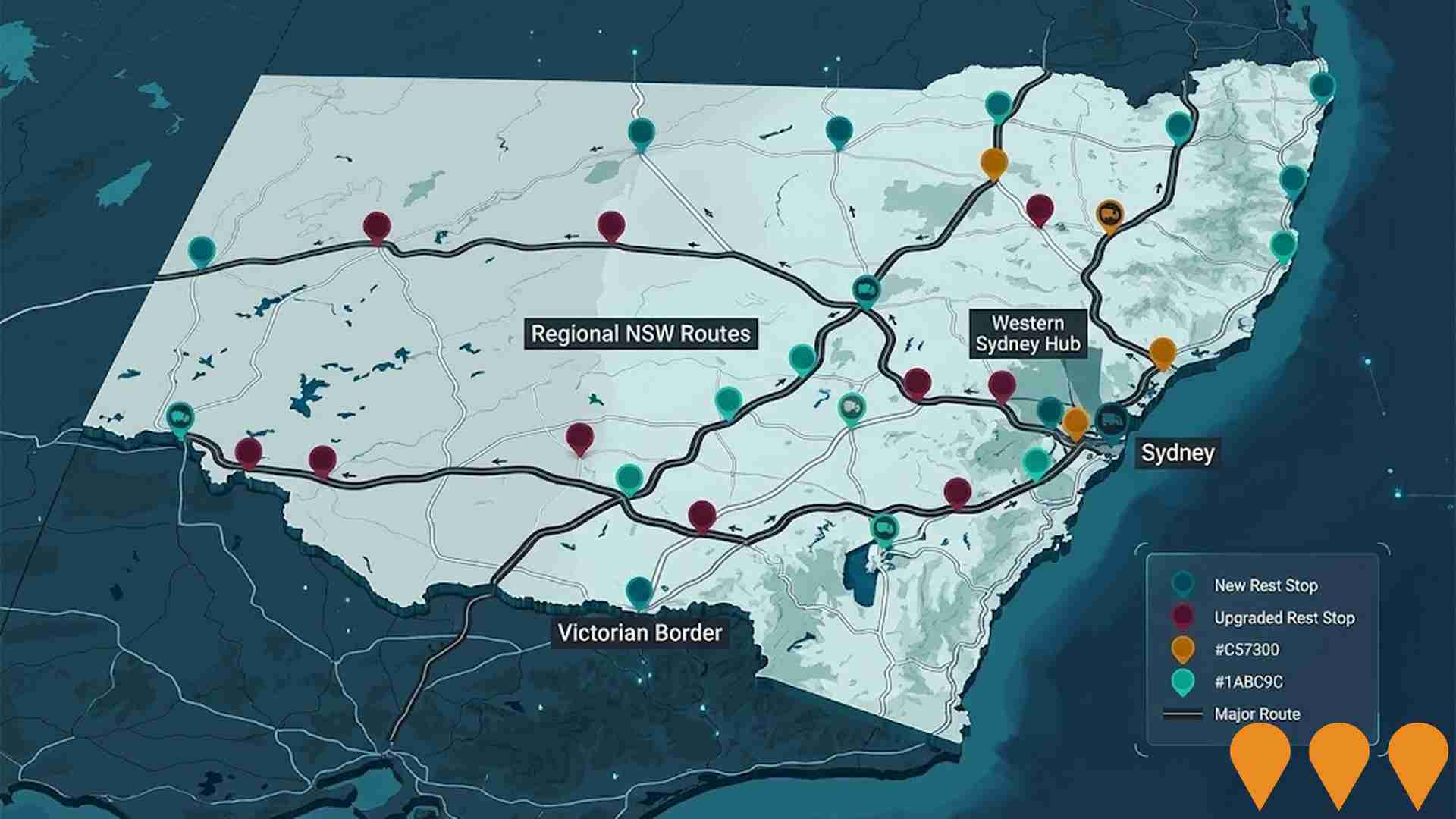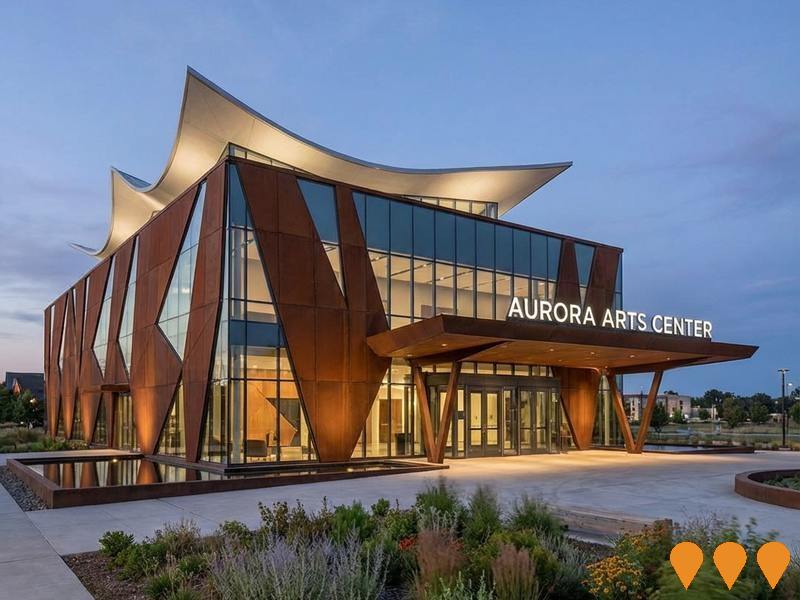Chart Color Schemes
est. as @ -- *
ABS ERP | -- people | --
2021 Census | -- people
Sales Activity
Curious about local property values? Filter the chart to assess the volume and appreciation (including resales) trends and regional comparisons, or scroll to the map below view this information at an individual property level.
Find a Recent Sale
Sales Detail
Population
Stirling is positioned among the lower quartile of areas assessed nationally for population growth based on AreaSearch's assessment of recent, and medium term trends
Stirling's population is approximately 2,141 as of August 2025. This figure reflects a decrease from the 2,191 recorded in the 2021 Census, indicating a drop of 50 people (2.3%). The estimated resident population of 2,139 in June 2024 and one validated new address since the Census date support this inference. This results in a population density ratio of 1,622 persons per square kilometer, above the average across national locations assessed by AreaSearch. While Stirling experienced a 2.3% decline since the census, the SA3 area showed a 0.5% growth, indicating divergent trends. Overseas migration contributed approximately 52.0% of overall population gains during recent periods in the area.
AreaSearch uses ABS/Geoscience Australia projections for each SA2 area, released in 2024 with a base year of 2022. For areas not covered by this data and years post-2032, age group growth rates from the ACT Government's SA2 area projections, using 2022 as the base year, are adopted. Future population trends indicate an overall decline, with the area's population expected to shrink by 133 persons by 2041. However, specific age cohorts are anticipated to grow, notably the 75 to 84 age group, projected to expand by 39 people.
Frequently Asked Questions - Population
Development
The level of residential development activity in Stirling is very low in comparison to the average area assessed nationally by AreaSearch
Stirling has seen approximately one new home approval per year.
Between the financial years 2021 to 2025, 6 homes were approved, with 1 more approved in the current financial year of 2026. The population has fallen during this period, suggesting that new supply may have kept pace with demand, providing good options for buyers. Compared to the Australian Capital Territory, Stirling has significantly lower construction activity, at 77.0% below the regional average per person.
This limited new supply typically supports stronger demand and values for established homes in the area. Additionally, construction activity is below the national average, indicating Stirling's established nature and suggesting potential planning limitations. With population stability or decline expected to continue, pressure on housing in Stirling should remain reduced, potentially presenting opportunities for buyers.
Frequently Asked Questions - Development
Infrastructure
Stirling has moderate levels of nearby infrastructure activity, ranking in the top 50% nationally
No changes can significantly affect a region's performance like alterations to local infrastructure, major projects, and planning initiatives. AreaSearch has identified zero projects that might impact this area. Notable projects include Molonglo Group Centre to Town Centre Transition, Fetherston Weston, Canberra Hospital Master Plan, and The Centenary Hospital for Women and Children Expansion Project, with the following list detailing those most relevant.
Professional plan users can use the search below to filter and access additional projects.
INFRASTRUCTURE SEARCH
 Denotes AI-based impression for illustrative purposes only, not to be taken as definitive under any circumstances. Please follow links and conduct other investigations from the project's source for actual imagery. Developers and project owners wishing us to use original imagery please Contact Us and we will do so.
Denotes AI-based impression for illustrative purposes only, not to be taken as definitive under any circumstances. Please follow links and conduct other investigations from the project's source for actual imagery. Developers and project owners wishing us to use original imagery please Contact Us and we will do so.
Frequently Asked Questions - Infrastructure
Canberra Hospital Master Plan
Long-term transformation of Canberra Hospital campus (2021-2041). The new Critical Services Building (Building 5) opened in 2023. Multiple stages are now in construction or detailed planning, including SPIRE Stage 1 (new emergency, surgical and intensive care facilities) and ongoing campus renewal works to deliver modern clinical facilities.

Low and Mid-Rise Housing Policy
State-wide NSW planning reforms via amendments to the State Environmental Planning Policy to enable more diverse low and mid-rise housing (dual occupancies, terraces, townhouses, manor houses and residential flat buildings up to 6 storeys) in well-located areas within 800 m of selected train, metro and light-rail stations and town centres. Stage 1 (dual occupancies in R2 zones statewide) commenced 1 July 2024. Stage 2 (mid-rise apartments, terraces and dual occupancies near stations) commenced 28 February 2025. Expected to facilitate up to 112,000 additional homes over the next five years.
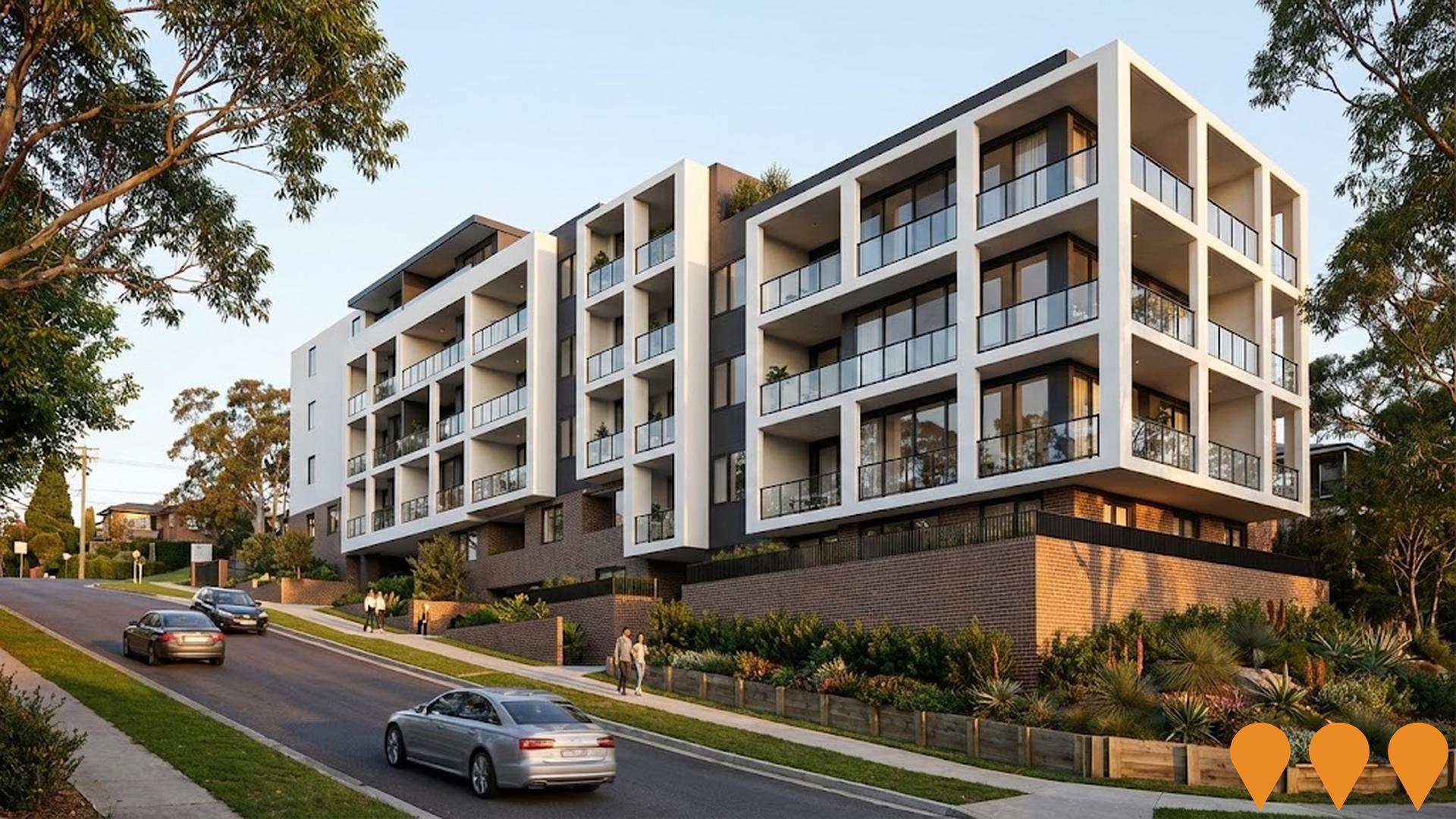
Canberra Light Rail Stage 4 - Woden to Tuggeranong
Proposed extension of Canberra's light rail network from Woden Town Centre south to Tuggeranong Town Centre via Mawson and the Athllon Drive corridor. This future stage aims to complete the north-south radial mass transit spine, connecting major residential, employment and activity centres while supporting bus, cycling, walking and private vehicle integration.
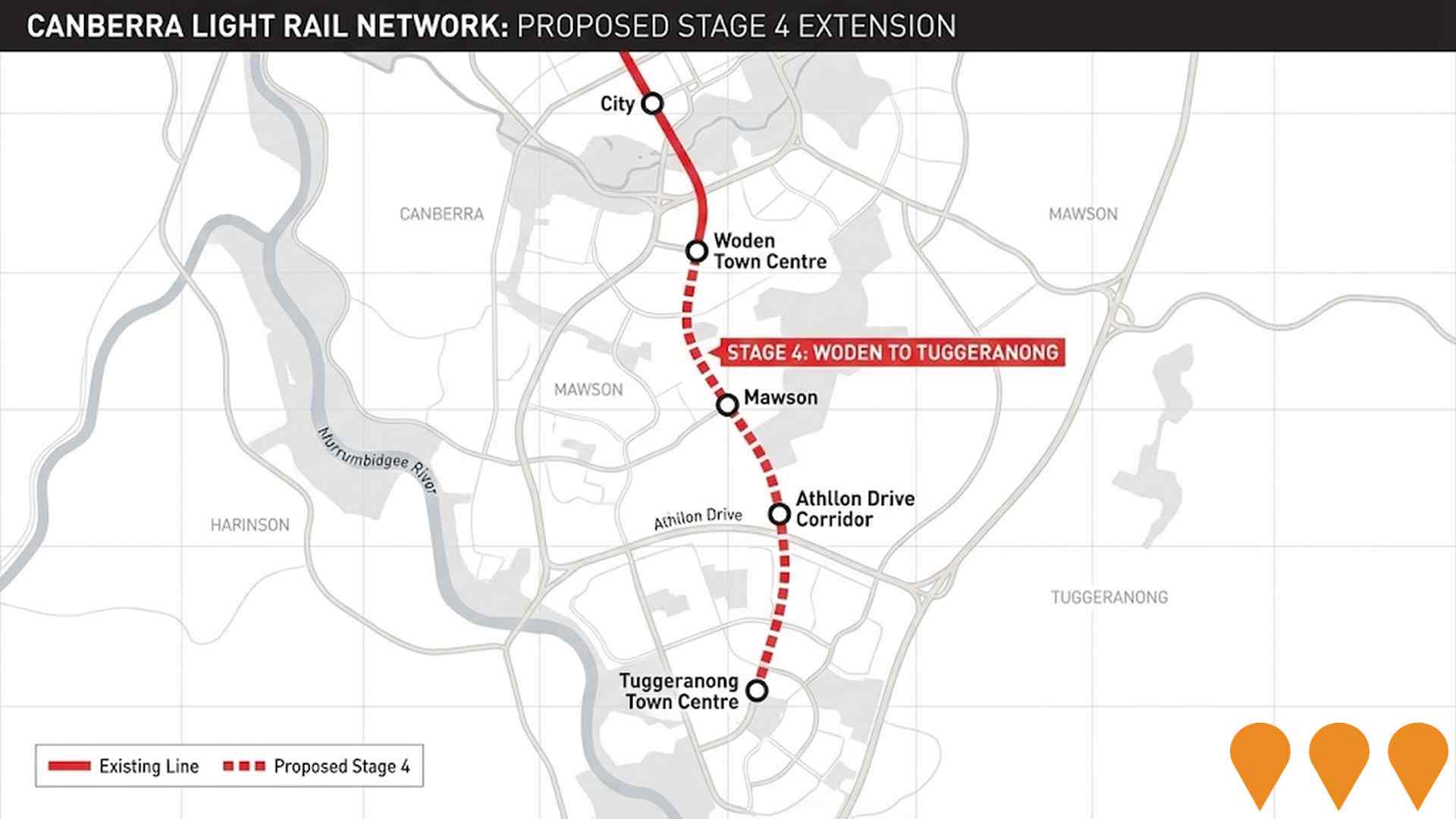
Molonglo Group Centre to Town Centre Transition
Transition of Molonglo Group Centre to Town Centre status to accommodate 70,000+ residents by 2050. Will include college, library, community centre, transport interchange and major commercial centre development.
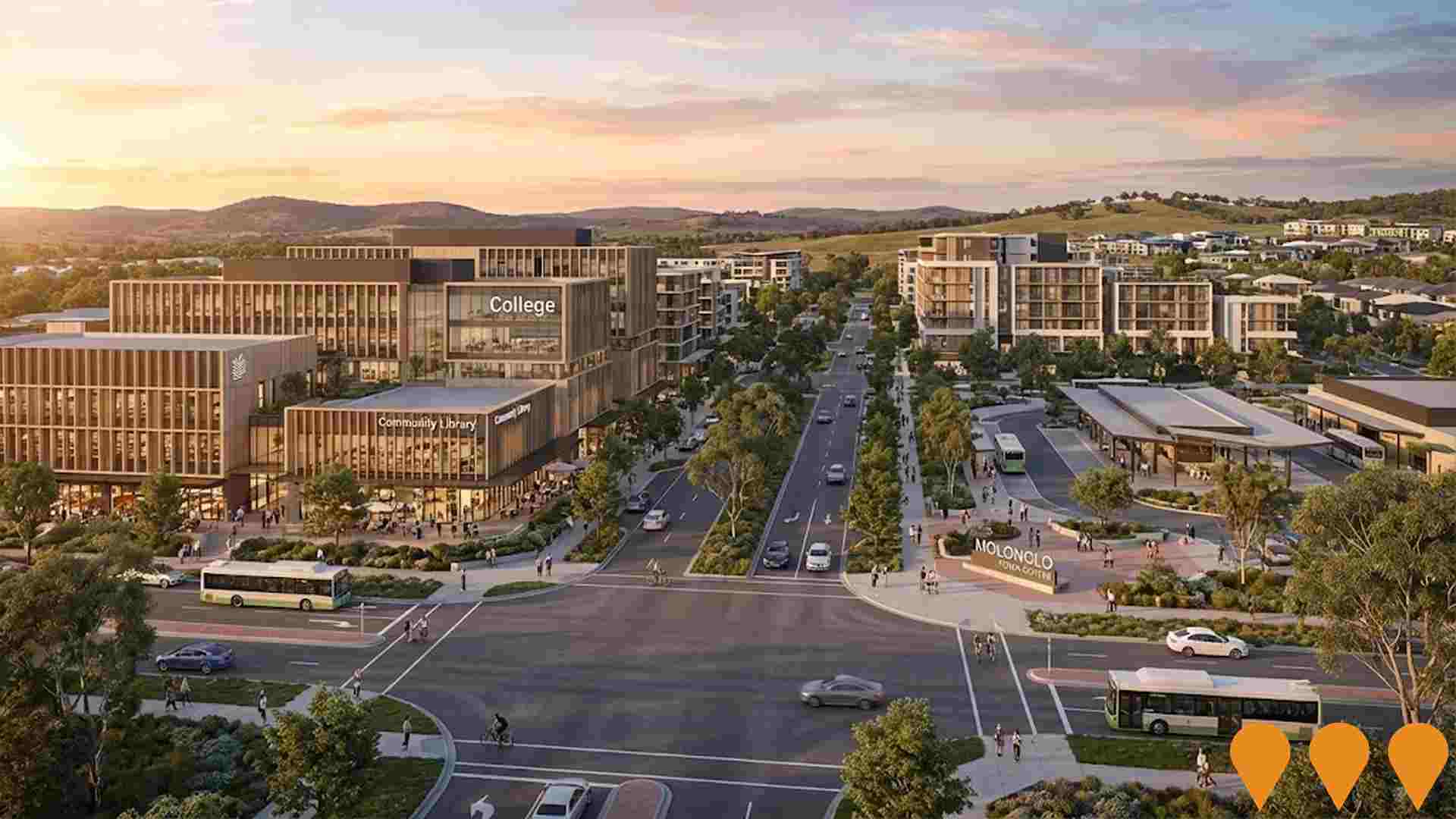
Enhanced bus and light rail corridors (Belconnen & Queanbeyan to Central Canberra)
ACT is progressing an integrated program to enhance high-frequency bus and future light rail corridors that link Belconnen and Queanbeyan with central Canberra. Light Rail Stage 2A (City to Commonwealth Park) commenced construction in early 2025 with services targeted from 2028, while planning and approvals continue for Stage 2B to Woden. The ACT Government has acknowledged and is planning upgrades for the Belconnen-to-City bus corridor as groundwork for a future east-west light rail Stage 3, and is coordinating cross-border public transport initiatives with NSW through the Queanbeyan Region Integrated Transport Plan and the ACT-NSW MoU for Regional Collaboration.
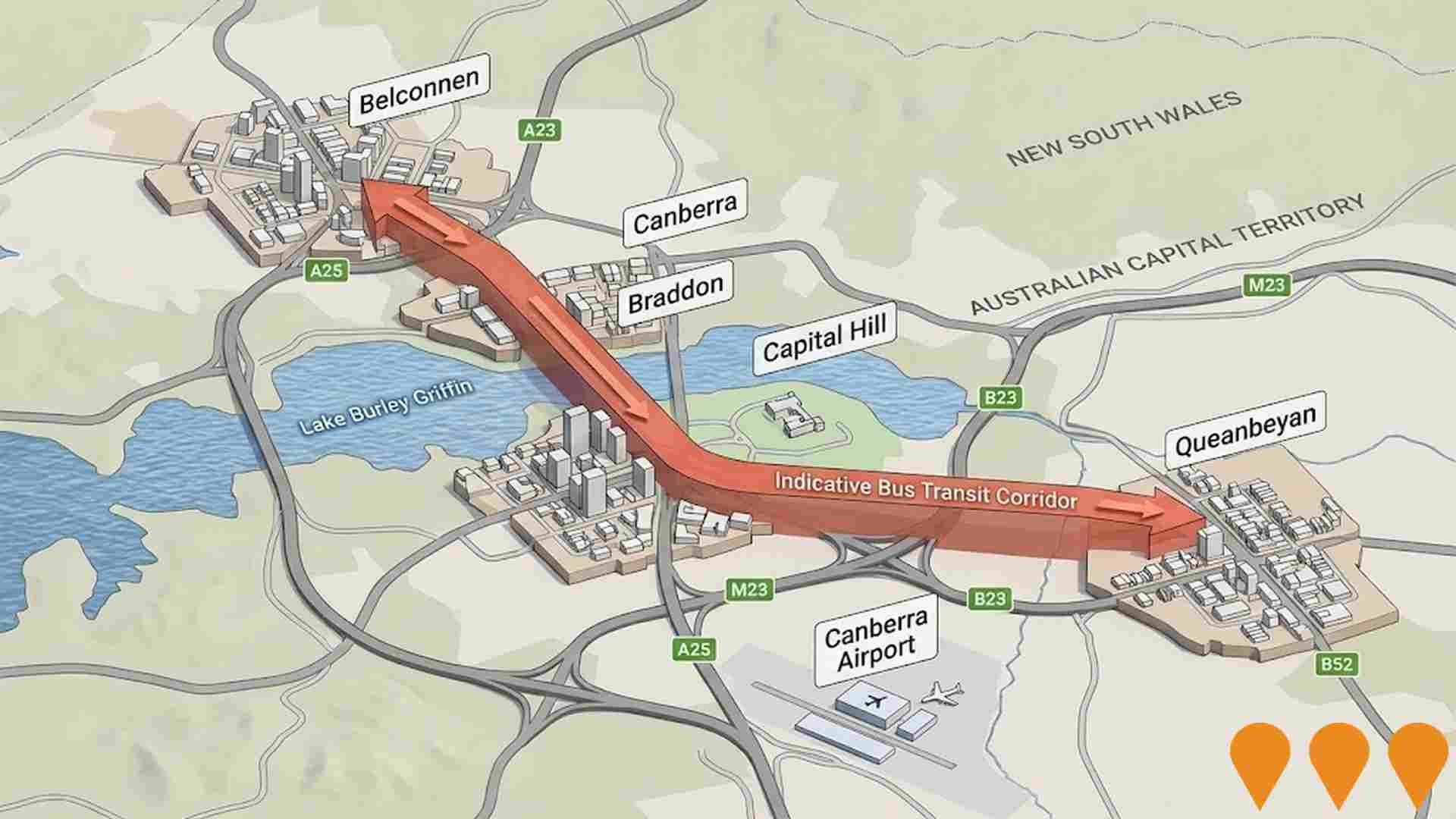
HumeLink
HumeLink is a new 500kV transmission line project connecting Wagga Wagga, Bannaby, and Maragle, spanning approximately 365 km. It includes new or upgraded infrastructure at four locations and aims to enhance the reliability and sustainability of the national electricity grid by increasing the integration of renewable energy sources such as wind and solar.
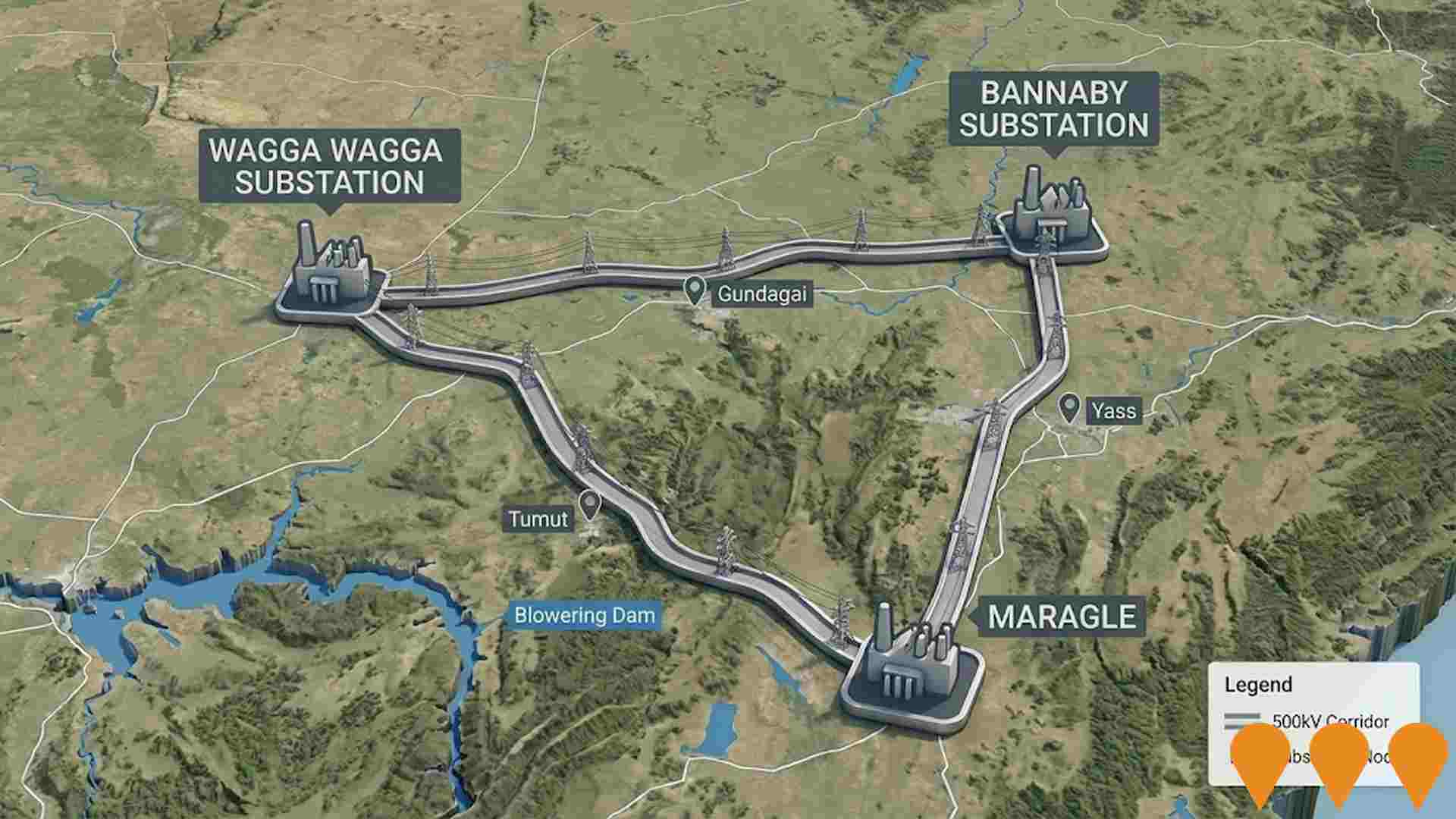
Queanbeyan Regional Integrated Transport Plan
Comprehensive transport planning initiative with 64 key actions for next 10 years. Addresses road safety, active transport connectivity, public transport availability, and future transport needs. Improved connections between Queanbeyan and ACT.
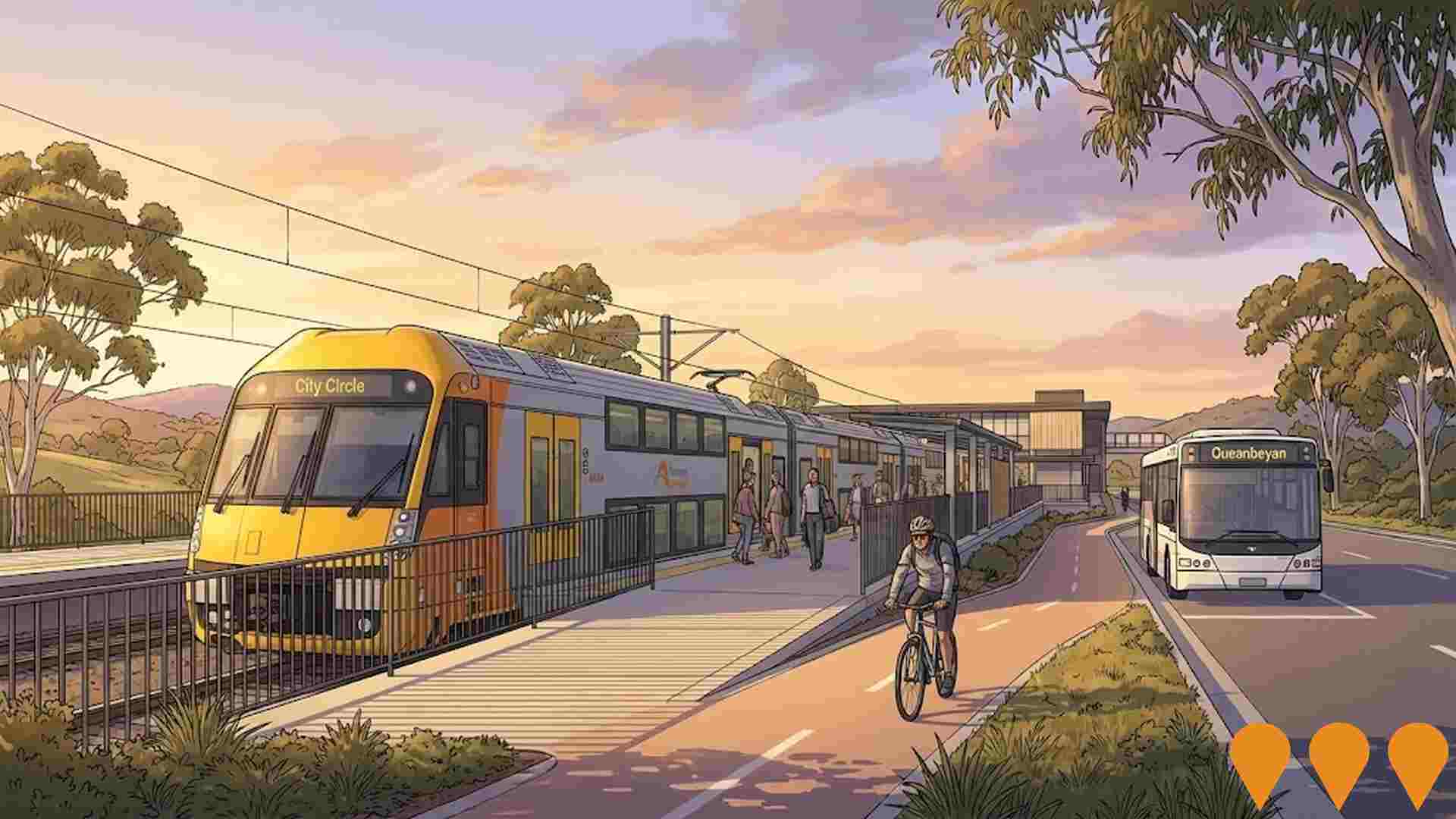
Big Canberra Battery (Williamsdale BESS)
A 250 MW / 500 MWh battery energy storage system at Williamsdale in southern Canberra, delivered by Eku Energy as Stream 1 of the ACT Government's Big Canberra Battery. Construction commenced in November 2024 with partners CPP and Tesla supplying Megapack systems. The asset will connect to Evoenergy's 132 kV network near the Williamsdale substation to provide two hours of dispatchable power, grid services and reliability for the ACT. Target operations in 2026.
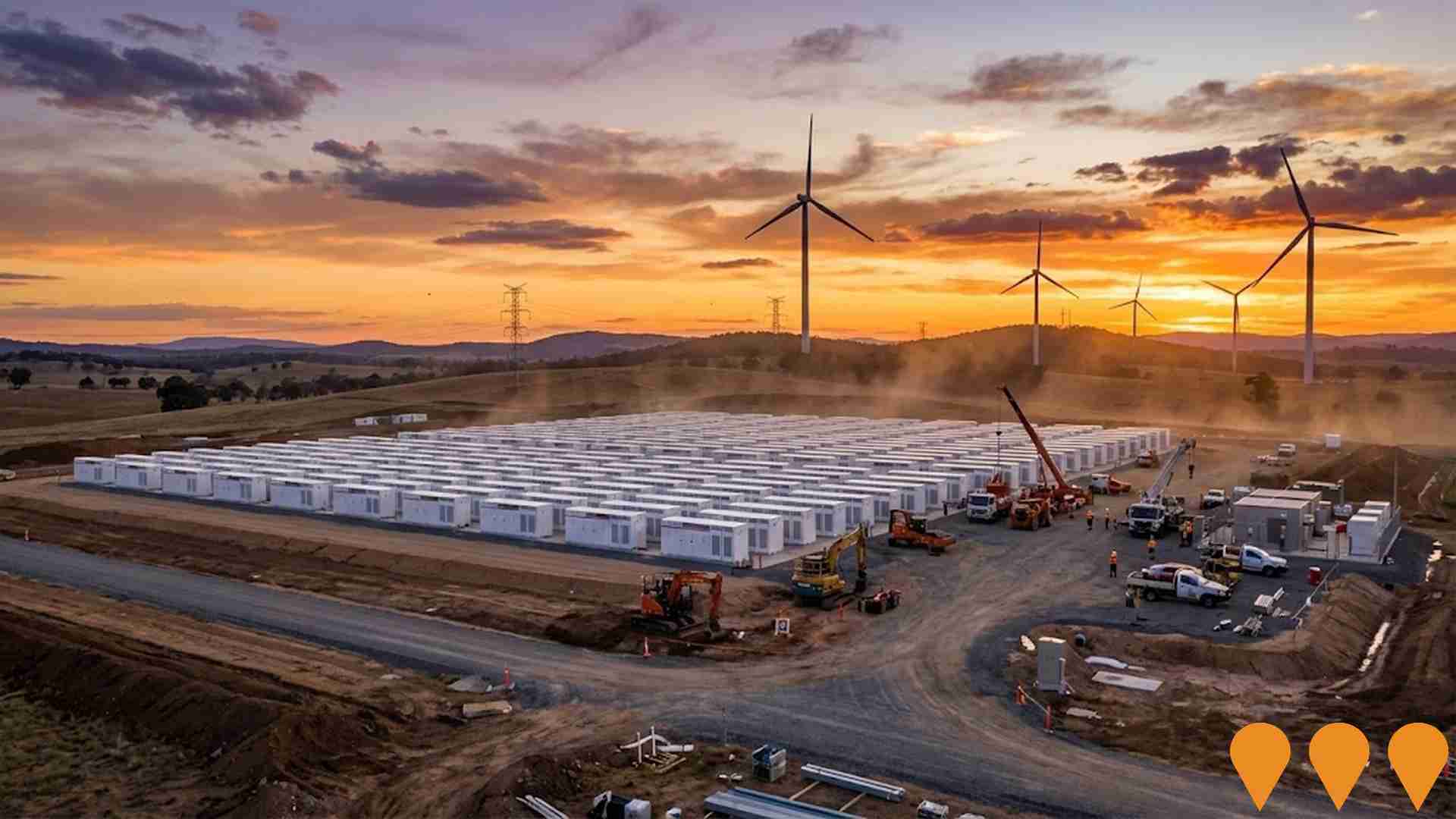
Employment
Employment drivers in Stirling are experiencing difficulties, placing it among the bottom 20% of areas assessed across Australia
Stirling has a highly educated workforce with essential services sectors well represented. The unemployment rate in Stirling is 5.5%, with an estimated employment growth of 1.7% over the past year.
As of June 2025, there are 963 residents employed while the unemployment rate is 2.1% higher than the Australian Capital Territory's rate of 3.4%. Workforce participation in Stirling is significantly lower at 54.6%, compared to the Australian Capital Territory's 69.6%. Employment among residents is concentrated in public administration & safety, health care & social assistance, and education & training sectors.
In contrast, professional & technical services employ only 9.6% of local workers, which is below the Australian Capital Territory's 11.1%. The predominantly residential area appears to offer limited employment opportunities locally, as indicated by the count of Census working population versus resident population. Over the 12 months to June 2025, employment increased by 1.7% while labour force increased by 1.6%, leaving unemployment broadly flat. By comparison, Australian Capital Territory recorded employment growth of 1.9%, labour force growth of 1.6%, with unemployment falling by 0.3 percentage points. Jobs and Skills Australia's national employment forecasts from May 2025 suggest potential future demand within Stirling. These projections, covering five and ten-year periods, indicate that national employment is forecast to expand by 6.6% over five years and 13.7% over ten years. However, growth rates differ significantly between industry sectors. Applying these industry-specific projections to Stirling's employment mix suggests local growth of approximately 6.5% over five years and 13.3% over ten years.
Frequently Asked Questions - Employment
Income
Income metrics indicate excellent economic conditions, with the area achieving higher performance than 75% of national locations assessed by AreaSearch
As per AreaSearch's latest postcode level ATO data released for financial year 2022, Stirling's median income among taxpayers is $57,733. The average income in Stirling is $68,682. This is above the national average. The Australian Capital Territory has a median income of $68,678 and an average income of $83,634. Based on Wage Price Index growth of 13.6% since financial year 2022, current estimates would be approximately $65,585 for the median income and $78,023 for the average income as of September 2025. Census 2021 income data shows household, family and personal incomes all rank highly in Stirling, between the 78th and 80th percentiles nationally. The data shows that 31.5% of the community (674 individuals) earn between $1,500 and $2,999, reflecting patterns seen in the region where 34.3% similarly occupy this range. Economic strength emerges through 36.0% of households achieving high weekly earnings exceeding $3,000, supporting elevated consumer spending. After housing costs, residents retain 87.6% of income, reflecting strong purchasing power. The area's SEIFA income ranking places it in the 8th decile.
Frequently Asked Questions - Income
Housing
Stirling is characterized by a predominantly suburban housing profile, with above-average rates of outright home ownership
The dwelling structure in Stirling, as per the latest Census, consisted of 82.4% houses and 17.5% other dwellings (semi-detached, apartments, 'other' dwellings), compared to the Australian Capital Territory's 81.7% houses and 18.2% other dwellings. Home ownership in Stirling stood at 44.7%, with mortgaged dwellings at 31.5% and rented ones at 23.8%. The median monthly mortgage repayment in the area was $2,258, higher than the Australian Capital Territory average of $2,251. The median weekly rent figure in Stirling was $460, compared to the Australian Capital Territory's $420. Nationally, Stirling's mortgage repayments were significantly higher at $2,258 than the Australian average of $1,863, while rents were substantially above the national figure of $375.
Frequently Asked Questions - Housing
Household Composition
Stirling has a typical household mix, with a fairly typical median household size
Family households account for 73.6% of all households, including 33.6% couples with children, 28.0% couples without children, and 10.9% single parent families. Non-family households comprise the remaining 26.4%, with lone person households at 24.3% and group households making up 2.2% of the total. The median household size is 2.6 people, which aligns with the Australian Capital Territory average.
Frequently Asked Questions - Households
Local Schools & Education
Stirling performs slightly above the national average for education, showing competitive qualification levels and steady academic outcomes
The area's educational profile is notable regionally with university qualification rates of 40.0% among residents aged 15+, surpassing the Australian average of 30.4%. Bachelor degrees are the most common at 24.4%, followed by postgraduate qualifications (11.1%) and graduate diplomas (4.5%). Vocational pathways account for 24.9% of qualifications among those aged 15+, with advanced diplomas at 10.2% and certificates at 14.7%.
Educational participation is high, with 26.9% of residents currently enrolled in formal education. This includes 9.5% in primary education, 7.0% in secondary education, and 4.7% pursuing tertiary education. Educational facilities appear to be located outside the immediate catchment boundaries, requiring families to access schools in neighboring areas.
Frequently Asked Questions - Education
Schools Detail
Nearby Services & Amenities
Transport
Transport servicing is high compared to other areas nationally based on assessment of service frequency, route connectivity and accessibility
Stirling has 19 active public transport stops operating currently. These are all bus stops. There are 11 different bus routes serving these stops, together offering 1,076 weekly passenger trips.
Stirling's residents have excellent access to public transport, with an average distance of 192 meters to the nearest stop. On average, there are 153 trips per day across all routes, which translates to about 56 weekly trips per individual stop.
Frequently Asked Questions - Transport
Transport Stops Detail
Health
Health performance in Stirling is well below average with prevalence of common health conditions notable across both younger and older age cohorts
Stirling faces significant health challenges, as indicated by health data. Both younger and older age groups have high prevalence rates for common health conditions.
Approximately 54% of Stirling's total population (~1,149 people) has private health cover, compared to 60.9% in the Australian Capital Territory. The most prevalent medical conditions are arthritis (affecting 10.7% of residents) and mental health issues (impacting 9.6%). Conversely, 59.4% of residents report having no medical ailments, compared to 66.3% across the Australian Capital Territory. Stirling has a higher proportion of seniors aged 65 and over at 27.1% (579 people), compared to 20.6% in the Australian Capital Territory. Health outcomes among seniors largely align with those of the general population.
Frequently Asked Questions - Health
Cultural Diversity
Stirling was found to be more culturally diverse than the vast majority of local markets in Australia, upon assessment of a range of language and cultural background related metrics
Stirling's population showed high cultural diversity, with 26.0% born overseas and 18.7% speaking a language other than English at home. Christianity was the predominant religion, accounting for 49.9%. Hinduism was overrepresented in Stirling at 2.5%, compared to 2.0% in the Australian Capital Territory.
The top three ancestral groups were English (26.8%), Australian (24.7%), and Irish (8.9%). Some ethnic groups showed notable differences: Hungarian, Polish, and Croatian were more prevalent in Stirling than regionally, at 0.7%, 1.2%, and 1.3% respectively.
Frequently Asked Questions - Diversity
Age
Stirling hosts an older demographic, ranking in the top quartile nationwide
Stirling has a median age of 46, which exceeds the Australian Capital Territory's figure of 35 and is significantly higher than the national norm of 38. The age group of 75-84 shows strong representation at 10.6%, compared to the Australian Capital Territory, while the 25-34 cohort is less prevalent at 10.0%. According to the 2021 Census, the population aged 15 to 24 grew from 9.8% to 11.9%, and the 75 to 84 age group increased from 9.0% to 10.6%. Conversely, the 85+ cohort declined from 6.1% to 4.6%, and the 65 to 74 group dropped from 13.1% to 11.9%. Demographic modeling suggests that Stirling's age profile will change significantly by 2041. Leading this shift, the 85+ group is projected to grow by 34%, reaching 131 people from 98. The aging population trend is clear, with those aged 65 and above comprising all of the projected growth. Meanwhile, the 55-64 and 0-4 age cohorts are expected to experience population declines.
